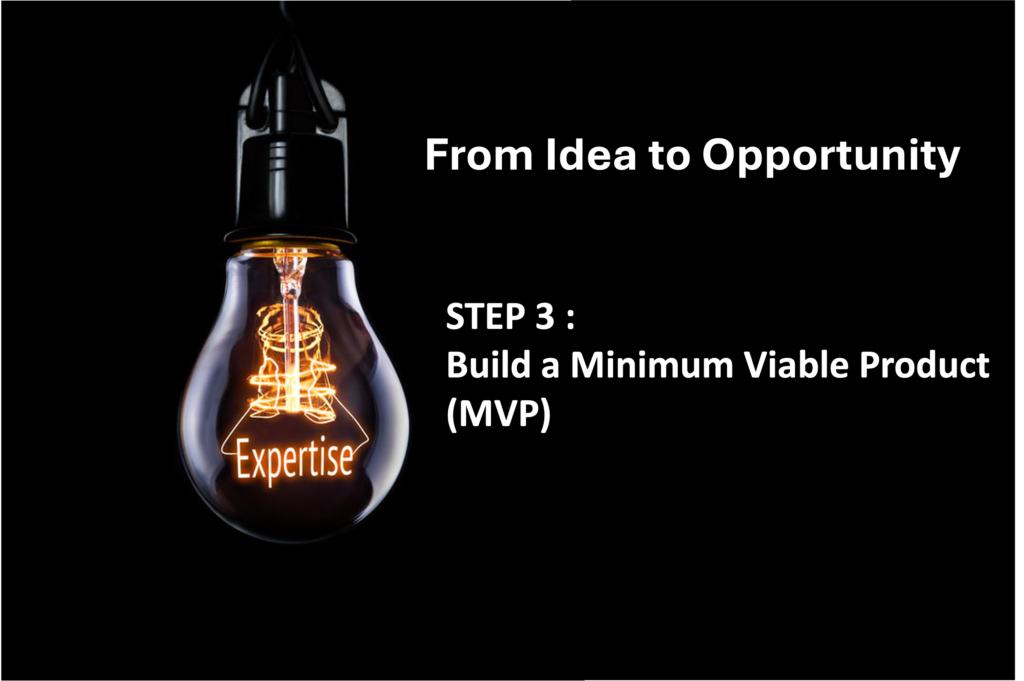
From Idea to Opportunity Step 3: Build a Minimum Viable Product (MVP)
Building a Minimum Viable Product (MVP) is a crucial step in the development of any startup. It involves creating a product with just enough features to satisfy early customers and provide feedback for future product development. This approach helps minimize the amount of up-front development time and expense while maximizing information learned about customers and their preferences. Here’s how to strategically approach building an MVP.
Importance of an MVP
- Risk Reduction: Launching an MVP allows you to test your business concept without committing extensive resources to developing a full-fledged product.
- Feedback Loop: An MVP provides a practical basis for gathering insights directly from users, which is invaluable for iterative design and development.
- Market Validation: It helps validate the demand for your product in the real market, allowing you to make informed decisions about scaling and further investment.
- Faster Time to Market: By focusing on core functionalities, you can speed up the development process and beat competitors to market.
Steps to Build an MVP
Step 1: Define Core Features
- What to Do: Identify the essential features that solve the core problem your product intends to address. These features should represent the minimal set needed to engage and satisfy early adopters.
- How to Apply: Prioritize features based on their necessity for functionality and their potential to attract early adopters. Use tools like the MoSCoW method (Must have, Should have, Could have, Won’t have) to help in decision-making.
- Link :
Step 2: Design the MVP
- What to Do: Design your MVP focusing on simplicity and usability. The design should support the core functionalities without any additional frills.
- How to Apply: Use wireframing tools like Balsamiq or Sketch to layout the user interface and experience. Ensure the design is intuitive and user-friendly.
- Link :
Step 3: Develop the MVP
- What to Do: Start the development process by using agile methodologies that support iterative development and frequent assessment.
- How to Apply: Employ a lean approach to software development. Utilize platforms like Firebase or MVP Factory for rapid development, which are especially useful for startups looking to build and iterate quickly.
- Link :
Step 4: Launch the MVP
- What to Do: Release the MVP to a controlled group of potential customers who are early adopters and reflective of your target market.
- How to Apply: Choose a launch strategy that reaches these users effectively—this could be through targeted social media ads, email marketing to a subscriber list, or leveraging an existing network.
- Link :
Step 5: Collect and Analyze Feedback
- What to Do: Gather feedback from initial users on the usability, functionality, and overall experience of using the MVP.
- How to Apply: Implement tools for collecting feedback such as in-app surveys, user activity tracking (via Google Analytics or Mixpanel), and direct user interviews.
- Link :
Step 6: Iterate Based on Feedback
- What to Do: Use the feedback to make necessary adjustments to the product. This might involve fixing bugs, adding new features, or removing those that do not add value.
- How to Apply: Continue the development cycle with quick iterations, each time enhancing the product based on user feedback and measuring the impact of changes.
- Link :
Building an MVP is a dynamic process that positions your startup to learn quickly and adapt effectively. By focusing on core features, engaging with early adopters, and iterating based on real-world feedback, you can ensure that your product meets market needs and has a better chance for success. This step not only validates your idea but also sets the stage for future scaling based on proven customer demand
+ There are no comments
Add yours